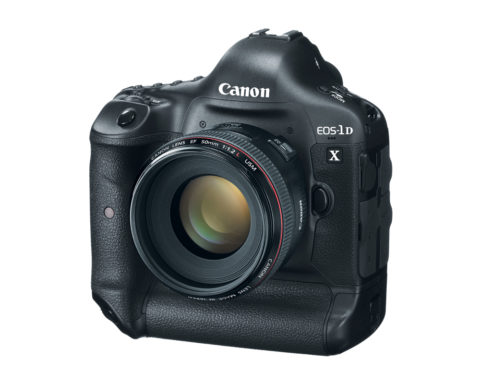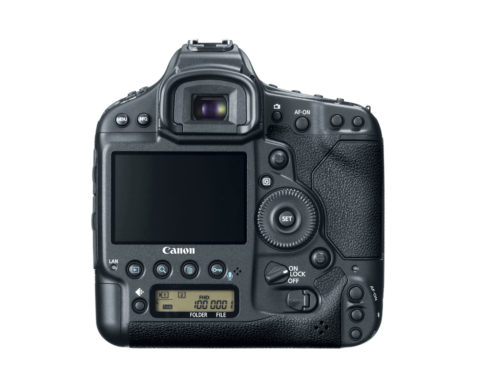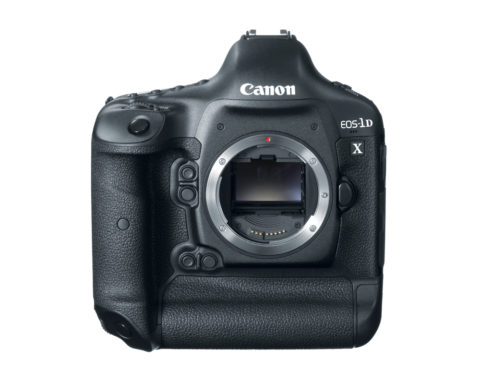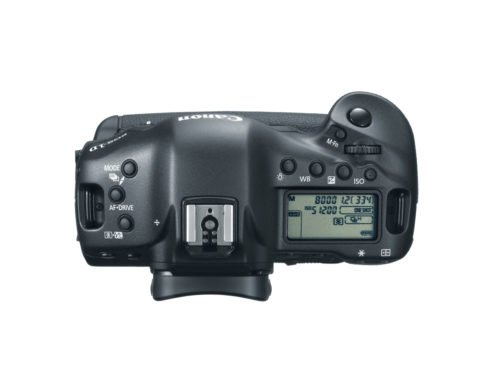Enter the Canon EOS 1D X
When the 1D mark 4 came out 2 years ago, I was markedly underwhelmed by the specs. More megapixels, same frame rate, same silly 1.3x crop factor. The specs alone pushed me from release day buy to wait for the reviews. As time when on and the camera was put though it’s paces, the reviews became increasingly underwhelming. The resolution didn’t help, the sensor was capable of way better performance than the camera could provide. As much as it pains me, I skipped it.
Enter the 1D X. Canon’s line of pro cameras has always been split between the 1D for sports and photojournalism and the 1Ds for studio work. I always thought the distinction, and the design choices, were a bit odd, but those are the breaks. Supposedly, at least if the Rumor mill is to be believe, the 1D X seeks to unify the two pro bodies. I’m not convinced of this, there’s nothing in the naming that doesn’t indicate that they can’t continue to produce a 1D S and a 1D X.
In any event, the 1D X goes a long way to correcting issues I considered to be major faults in the 1D line.
The Sensor
The 1.3x crop factor sensor is gone, and good riddance, this is a full frame camera. Lenses are what they’re suppose to be now, and not some odd slightly tighter but not in a really useful way crop factor. The new sensor is also 18 megapixels, not some ridiculous lets see how many pixels we can cram in the sensor and still make it work, like Canon’s been doing for the past couple of years. In fact, the pixels in the 1Ds are 0.55 micron larger than those in the 5D-2 and 1.55 microns larger than those in the 1D mark 4. The sensor is backed by 2 DIGIC V+ processors, and all told the system can shoot up to 14 FPS. Though shooting at 14FPS requires the mirror to be locked up (so no AF or metering), JPEG as the output type and an ISO less than 32000. Shooting speeds of 12 FPS should retain full functionality.
So what does this all mean? Well the bigger pixels are a good thing. If Canon can keep the read noise as low as it was in the 1D-4, the larger pixels mean they can collect more signal per unit time, and store more signal over the course of an exposure. In short, more signal, same or less noise, better images. Canon claims the new sensor gets 2 stops more dynamic range as a result of the design. Canon’s ISO settings are 100-51,200 with L at ISO 50, H1 at ISO 102,400 and H2 at ISO 204,800, for a total range of ISO 50-204,800.
However, the problem with the 1D-4, at least so far as I could tell, is that the ADCs and read electronics necessary to read 160MP/s (16MP * 10 FPS) worth of data, weren’t able to operate at low enough noise to fully make use of what the sensor is capable of. The 1D X makes it even worse adding 2-4 FPS to the frame rate. I’m cautiously optimistic about how this will play out and whether or not Canon can control the noise in the read electronics, or has a secondary low noise path for high-speed shooting modes, remains to be seen.
The Tech Stuff
Aside from the sensor, the technical details are well just that. Everybody else writing about the camera is going to cover them. I’m only going to briefly run though them.
Autofocus
The AF system is, like usual, new. There are now 61 AF points in a pattern that is very much like Nikon’s 51-point system instead of Canon’s old 45-point system. In terms of sensitivity, the system couldn’t be more complicated.
- All 61 points are horizontal sensitive with f/5.6 and faster lenses.
- 20 of the out er points are cross sensitive with f/4 and faster lenses.
- The 21 central points (3 columns of 7) are cross sensitive with some f/5.6 or faster lenses
- The 5 center most points are high precision cross sensitive with f/2.8 and faster lenses.
More over the cross sensors aren’t scattered so widely around the frame as they use to be.
Additionally, the AF system incorporates all the cool modes that the EOS 7D brought to the market; spot, single point, single point w/ 8 surrounding points, zone, and automatic.
Exposure
Exposure control has been expanded to ±5 stops. Bracketing modes (2, 3, 5, 7, and 9 shot brackets) appear to be retained. In addition there’s a new HDR, for lack of a better term, mode that combines in-camera a 9 frame bracket into a single HDR exposure/file. What remains to be seen is whether this mode will combine everything into a single >16-bit RAW file and let you adjust the mapping curve in post, or if it will map it into a narrower range.
Video
The EOS-1D X does video like it’s EOS predecessors, color space, record time, resolution, and frame rates appear to be identical to it’s predecessors. 720p60/50(NTSC/PAL) 1080p24, 1080p25 (PAL), and 1080p30 (NTSC) are supported.
Storage
In another nice move, Canon has done away with the stupid SD card slot and provided us with dual compact flash slots capable of supporting UDMA 7 CF cards. While SD cards are cheap and popular in consumer cameras, their small size makes them something more like a nightmare in the professional market.
Connectivity
In addition to the standard USB 2 port, Canon has added a gigabit Ethernet port as well. Additionally the position of the accessory jack has been moved, and the EOS-1D X debuts with a new smaller sized WiFi module and now a GPS module.
Ergonomics/UX
This is the part I find most interesting, and almost always want to skip writing about the rest of the tech stuff and just talk about the ergonomics. The EOS-1D X appears very similar in terms of design to Canon’s previous EOS-1 series bodies. I’ve written an in-depth discussion on the UX of Canon’s EOS-1D mark 3, much of was I discussed there still applies. However, Canon has continued to refine the UI, and the EOS-1D X make some very important steps in the right direction.
There’s an integrated vertical grip that provides internal space for the large LP-E4n battery. Most impressively, the battery grip’s usability isn’t nearly as compromised as it has been on Canon’s predecessors. If you note in the image there’s a second thumb stick near for the the battery grip. This is, in my opinion, the most welcomed UX improvement on the camera.
Other new buttons on the rear of the body include the Liveview/video mode button (near the top AF on), a quick control button (that allows single handed control over most camera settings), and the button near the rear LCD that I presume has something to do with the network port or GPS.
On the front of the camera, Canon has removed the single “DOF preview” button and replaced it with 4 user programmable buttons grouped in 2s under the middle finger position on the grip. This is another design decision that I think was well thought out. In fact, I think this implementation is superior to Nikon’s front button implementation, namely because it retains both functional and positional parity between the normal and vertical grips.
Finally moving to the top of the camera, we can see that Canon hasn’t radically altered the design here, though they have made some changes. White balance has been moved from the rear of the camera on the EOS-1D mark 4 to the top in front of the LCD on the EOS-1D X. I’m not sure I completely get behind this change as I almost never alter the white balance in the field, but for someone who does it’s considerably more convenient.
The EOS-1D X retains the M-Fn button of the EOS-1D mark 4, though it remains to be seen if they haven’t increased the functionality that it can be configured for. The left shoulder also remains unchanged from the EOS-1D predecessors (at least as far back as the EOS-1D mark 3).
Unfortunately they’ve kept the same single functions on the right side buttons as they have on past pro bodies. I’ve never quite understood this design decision, and would quite like to have access to the flash exposure compensation though on of the top-right buttons. However, with the addition of the new customizable buttons on the front, there’s always the possibility that one of them will be able to fill that need.
Finally Canon has taken the idea of superimposing data in the viewfinder, like they did with the 7D but expanded upon it. The EOS-1D X includes not only user customizable AF point display and custom grid options but the ability to display the AF status inside the scene area in addition to or instead of just along the bottom. From a usability stand point, choice is good, and being able to see where you’re focus points are is something that’s certainly useful. Additionally the ability to optionally display AF confirmation in a much more noticeable position should be a very nice feature. The EOS-1D X retains the same big 100% coverage .76x magnification viewfinder of the EOS-1Ds, which is still unmatched in terms of size and magnification in the 35mm SLR world.
Now we Wait
I have to admit, Canon really seems to have pulled off what looks like a very solid camera here. Unlike the EOS-1D mark 4 predecessor, I’m actually excited by what I see instead of disappointed. The usability improvements alone make me really happy, and if the image quality pans out as well as the sensor indicates it should, this will be one heck of a camera.
Unfortunately, since I’m not nearly awesome enough for Canon to send me one early to evaluate, I’ll be waiting like everyone else for March of next year. Oh yea, price wise, it falls between the EOS-1D and the EOS-1Ds, with an MSRP of $6500. I guess Canon still thinks being a photographer is a license to print money or something.
Press kit images courtesy of Canon USA.




Comments
I’m looking forward to the new 1D X. I had a really bad experience with the 1D MK IV, CPS couldn’t fix it and I couldn’t use it (low light at a reception was awful compared to previous versions, and backlit stationary shots the camera would confirm focus and be off consistently…and no it wasn’t a calibration issue). So I’ve been waiting about 4 years now and didn’t jump over to Nikon. Hopefully the new sensor and processors fix all of that mess.
I’m curious if the user can adjust the crop factor when needed like on the D3s? I’ve haven’t seen any info on that but it would be a real bonus! I’ve grown accustom to using the 15mm with the 1.3 crop on previous 1D bodies. I suppose I could use the MKIII as a dedicated fish eye camera, but having that option would be a better option.
Michael
Unfortunately, I haven’t heard or seen anything about being able to set the crop in camera yet either.
That said, personally, I always prefer to crop in post and use something like Lightroom’s or Aperture’s ability to sync that crop across a lot of images quickly, than give up the pixels at capture time. Though I realize that’s not an option for everyone.
Yeah, that’s an option…it’s just nice to be able to frame the shot as you see it especially with the fish eye.
Well there’s always the superimposed viewfinder grid. If we’re lucky there will be a grid line at approximately the 1.3 crop position. It would be ideal if there was a way to customize the grid/build a mask using the LCD, but it remains to be seen if Canon will give us that option.